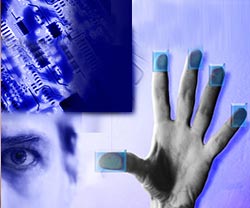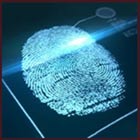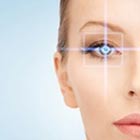Biometric Authentication Options
 In my last blog, I provided an overview of how biometric systems generally work. This one describes the biometric solutions banks are adopting, and in which countries those solutions are being used.
In my last blog, I provided an overview of how biometric systems generally work. This one describes the biometric solutions banks are adopting, and in which countries those solutions are being used.
We recently published a white paper that explains the factors driving the rapid adoption of biometric systems and how banks are using biometrics to transform online, mobile, ATM, and in-branch banking.
The paper assumes the reader understands the basic concepts of how biometric authentication systems work and what options are available. This blog series provides a similar foundation for readers who may be less familiar with these emerging methods of identification and authentication.
Types of Biometric Security
There are two types of biometric security: physical and behavioral. Physical biometrics measure physical attributes such as facial features or fingerprints. Behavioral biometrics measure the behavioral traits of an individual, and unlike physical biometrics include the element of time. For example, when you sign your name, you begin at one point and end at another. Behavioral biometrics include signatures (as you might have guessed) and speech patterns.
Physical Biometric Solution
Fingerprint Recognition
 Fingerprint biometrics cannot be faked or altered easily. The uniqueness of a fingerprint can be determined by the pattern of ridges and furrows on a fingertip as well as the minutiae points.
Fingerprint biometrics cannot be faked or altered easily. The uniqueness of a fingerprint can be determined by the pattern of ridges and furrows on a fingertip as well as the minutiae points.
A fingerprint sensor is an electronic device that captures a digital image of the fingerprint pattern. The captured image is called a “live scan.” The live scan is digitally processed to create a biometric template which is stored and used for matching.
| Uses | Where Used |
|---|---|
| Automatic Teller Machines (ATMs), Point of Sale (POS), e-payments, access control, branch banking, online banking, fund transfer, checking transaction history, check cashing, online purchases, loan origination, and debit cards. | Costa Rica, Egypt, Mexico, Singapore, USA, Bangladesh, Benin, Bolivia, Brazil, Brunei, Cambodia, Chile, China, Colombia, Germany, India, Indonesia, Kazakhstan, Kenya, Malaysia, Mauritius, Mexico, Netherland, Nigeria, Pakistan, Panama, Philippines, Puerto Rico, United Arab Emirates (UAE), Uganda, USA. |
Hand Geometry
 Hand geometry identifies users by the shape of their hands. It is the first biometric to achieve widespread computerized use.
Hand geometry identifies users by the shape of their hands. It is the first biometric to achieve widespread computerized use.
A hand geometry system measures the physical characteristics of the fingers or the hands, including their length, width, thickness and surface area. It compares the results of a measurement to previous measurements stored in a file.
Since a person’s hands and fingers are unique, but not as unique as other traits, such as fingerprints or irises, this method of authentication and identification is not as robust as some other alternatives. Unlike finger prints or irises, hand geometrics can change over time as a result of injury, weight change, or arthritis.
| Uses | Where Used |
|---|---|
| ATMs, access control | USA, UAE, Puerto Rico, Saudi Arabia, and Ukraine |
Facial Recognition
 Facial recognition systems measure the structure, shape, and proportions of facial characteristics including the eyes, nose, and mouth. They can convert a photograph or video image into a code that describes a person’s face.
Facial recognition systems measure the structure, shape, and proportions of facial characteristics including the eyes, nose, and mouth. They can convert a photograph or video image into a code that describes a person’s face.
The most advanced method of facial recognition is three-dimensional (3-D) facial recognition. It uses 3-D sensors to capture information about the shape of a face and distinctive features on the face. Unlike 2-D methods, 3-D facial recognition is not affected by changes in lighting, and it can identify a face from a variety of angles.
End users generally prefer facial recognition to other methods because it is hands-free and requires less effort than some other identification and authentication methods.
| Uses | Where Used |
|---|---|
| Branch banking, fraud recognition, access control | USA, United Kingdom (UK), China, and Switzerland |
Iris and Retina Scans
 The iris is the colored, ring-shaped area surrounding the pupil. No two iris structures are alike, even in the case of identical twins.
The iris is the colored, ring-shaped area surrounding the pupil. No two iris structures are alike, even in the case of identical twins.
Iris recognition technology uses small, high-quality cameras to capture a black and white high-resolution photograph of the iris. Once the image is captured, it is analyzed, processed into an optical "fingerprint," and translated into a digital form.
The retina is the thin neural cell tissue at the back of one’s eye. Its uniqueness remains constant throughout a person’s lifetime. The blood vessels in the retina provide a unique pattern, which is used in retina recognition technology. A retinal scan is performed by casting an unperceived beam of low-energy infrared light into a person’s eye as the user looks through the scanner’s eyepiece. This beam of light traces a standardized path on the retina. Once the scanner device captures a retinal image, specialized software compiles the unique features of retinal blood vessels into a template.
| Uses | Where Used |
|---|---|
| Branch banking, ATMs, Internet banking, access control | Jordan, Yemen, the USA, Italy, Turkey, Lebanon, Egypt, Norway |
Behavioral Biometrics
Voice Recognition
 The behavioral components of voice include movement, manner, and pronunciation.
The behavioral components of voice include movement, manner, and pronunciation.
Voice verification technology works by converting a spoken phrase from analog to digital format and extracting the distractive vocal characteristics to create a speaker model or voiceprint. A template is then generated and stored for future comparison.
Voice recognition is often used where voice is the only available biometric identifier, such as over the telephone.
| Uses | Where Used |
|---|---|
| Telephone banking, branch banking, Password/PIN resets, high-risk transactions, and mobile banking | Australia, Israel, Indonesia, USA, Brazil, Pakistan, China, Netherland, Canada, and New Zealand |
Signature Recognition
 The behavioral characteristics of a signature include the changes in the timing, pressure, and speed during the course of signing. While it may be very easy to duplicate the visual appearance of the signature, it is very difficult to duplicate the behavioral characteristics.
The behavioral characteristics of a signature include the changes in the timing, pressure, and speed during the course of signing. While it may be very easy to duplicate the visual appearance of the signature, it is very difficult to duplicate the behavioral characteristics.
Signature Recognition uses a pen and a specialized writing pad that are connected to a local or central computer for template processing and verification.
Voice recognition is often used where voice is the only available biometric identifier, such as over the telephone.
| Uses | Where Used |
|---|---|
| Internet banking, branch banking, document processing, and workflow | Estonia, Israel, USA, China, UK |
The Comparative Popularity of Biometric Methods
Biometric options are becoming more commonplace in the everyday lives of consumers. iPhone 6 and iPhone 5S phones both include fingerprint scanners, for example. Apple reported it sold more than 10 million iPhone 6 handsets the first three days following its launch. StatisticBrain estimates about the same amount of iPhone 5S models have been sold. That’s more than 20 million phones with fingerprint recognition capabilities!
Intelligent Environments recently commissioned a survey of 2,000 UK banking customers in which 79 percent said they would willingly replace their passwords with biometric security measures such as fingerprint scanners. The survey, which was the basis for its new Future Password Index, indicated that fingerprint technology was the most popular biometric type and voice recognition was the least popular.
Those trends are generally good news for banks because customers have to be willing to use the technology banks adopt.
Interestingly, biometric technologies can also be used to open new markets, especially those in which citizens are illiterate. Instead of requiring a physical signature to open a bank account or to conduct bank transactions, customers can simply use their unique physical traits. Of course, as with any other type of authentication technology, it is imperative to understand the nuances of the market you want to serve to ensure you choose and deploy options that will benefit both the bank and its customers.
Bottom Line
Biometric technologies have the potential to make banking more convenient and secure than it has ever been, provided that the technologies are implemented within the context of the existing IT ecosystem and security framework.
There are many biometric solution choices available that can be used alone or in combination to solve specific problems or to provide end-to-end solutions
Biometric solutions, when implemented well, can improve bank operations and customer loyalty. Our new white paper which provides much more detail on these points, as well as best practice tips. Download it now and tell us what you think.
If you already use biometric solutions, or if you have questions, please leave a comment below. We’d love to hear from you.




